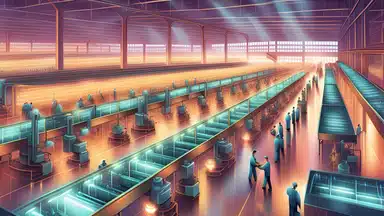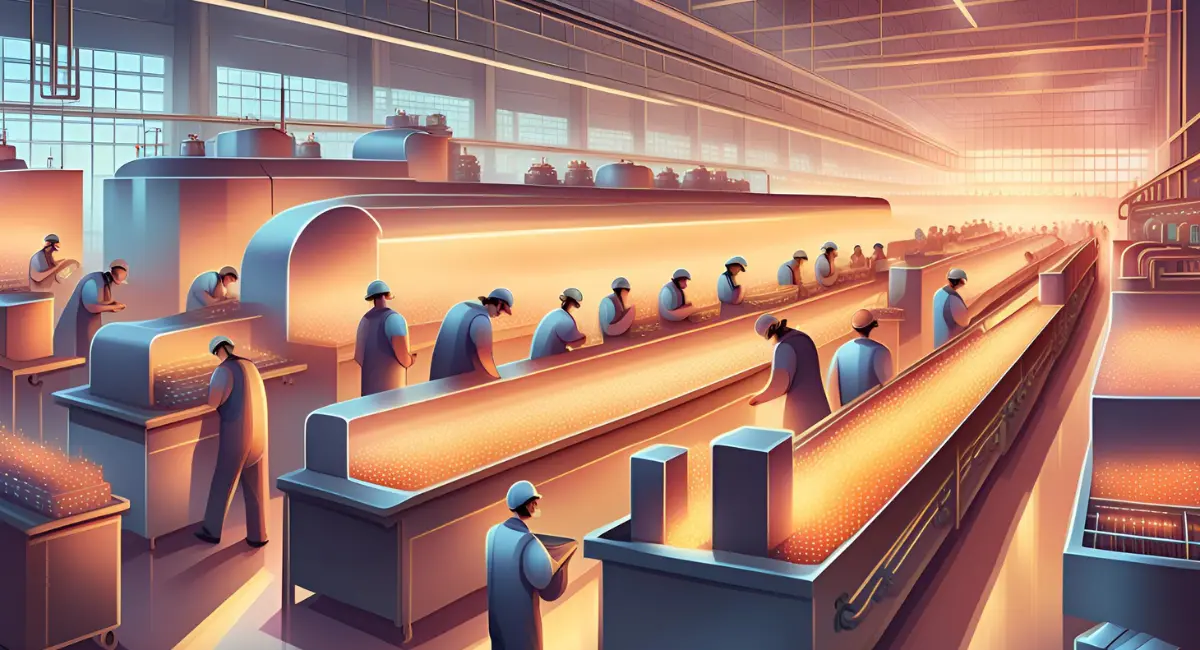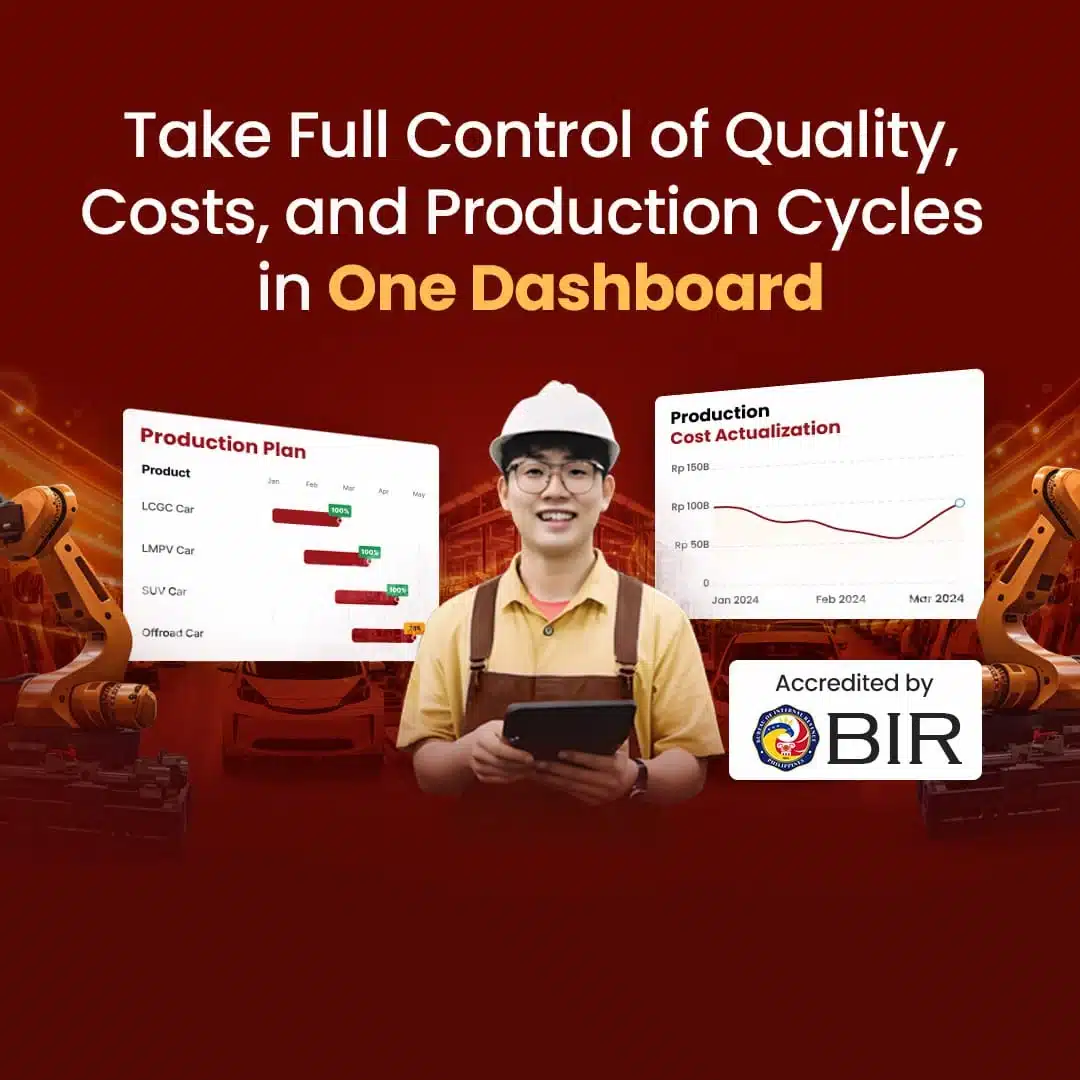What is mass production, and how does it work? It refers to making large quantities of goods efficiently, helping companies reduce costs. Big manufacturers use this method to mass produce items quickly, which saves time and money. Ito ay mahalaga sa mga industriya to meet growing demand.
How does mass production benefit industries? By producing in bulk, companies can keep up with high demand. Many mass production examples show its impact on production and manufacturing. Understanding the advantages of mass production helps businesses run more smoothly.
Table of Contents
Key Takeaways
|
What is Mass Production?
Mass production is a system where large quantities of goods are made continuously. Factories with many workers and machines mass produce thousands or millions of products at once. This allows companies to make a lot of items in a short period.
The characteristic of mass production is its nonstop process, where products flow through machines without pauses. Large factories often follow this method to meet high demand quickly. Mass production examples include cars, electronics, and clothing, which are produced at a rapid rate.
Fundamental Characteristics of Mass Production
Understanding the characteristic of mass production is key to grasping what is mass production and its advantages. By examining how factories mass produce items and exploring mass production examples, we can see its impact on efficiency in production and manufacturing.
High-volume production process
Mass production creates large quantities of goods quickly, meeting high demand efficiently. It works by streamlining processes to mass produce items. What is mass production lies in its ability to maintain speed and efficiency, ensuring a steady flow of products to the market.
Identical products
Mass production involves quickly creating large quantities of identical items through an efficient process. Factories need new lines to produce different products. This method ensures uniformity, with minimal variation, helping businesses meet high demand efficiently in industries like cars or electronics.
Organized steps in production processes
It follows a set order where goods pass through different stages, all arranged by the production process. This approach allows manufacturers to efficiently mass produce products. A major advantage of mass production is its reliable and uniform output.
Utilizing machines for high-volume production
Machines are essential to create many products quickly. They can work nonstop, unlike human labor which gets tired. For tasks like mass production, machines are much more reliable, making it easier to mass produce large quantities efficiently.
Reduced need for supervision
Manufacturers use advanced machines, reducing the need for constant monitoring. Supervisors focus on spotting mass production errors or faulty machines, as most production and manufacturing processes are automated. This automation not only makes mass production more efficient but also ensures more accurate data collection for creating comprehensive production reports.
For more insights on improving your mass production, check out our top production software recommendations. These tools can streamline your processes, boost efficiency, and reduce costs. Discover how the right production software can simplify generating production reports and transform your business operations!
Key Stages Before Starting the Production Process
Before moving to mass production, there are a few important steps to prepare for the process. These steps will ensure that the production runs smoothly and efficiently. Here are the stages you need to follow to understand what mass production is and how to mass produce successfully.
1. Documentation for product specifications
Before starting mass production, the manager must create the product requirements document aligned with the MRP system. Input from Engineering, Sales, and Marketing is gathered for approval. Once finalized, this document guides decisions and ensures clear planning.
The product documentation usually includes:
- Complete list of features
- Performance metrics for each element
- Estimated production volume
- Target cost
- Product release schedule
- Product roadmap
2. Engineering test and validation phase
The second phase is called engineering validation and testing (EVT). This phase ensures that a product design meets the needs of the PRD. The team works to implement features described in the PRD that will be mass produce, testing each function thoroughly to meet goals.
During EVT, the focus is on identifying potential risks from the PRD and finding solutions to reduce them. By doing this, the team ensures the product is ready for mass production. These steps help in perfecting the product and showcase examples of mass production in real-world settings.
3. Product design validation and testing
The design validation and testing phase improves product quality and design to match the final desired outcome. Here, manufacturers select materials and designs that meet the form, fit, and aesthetic standards. These components are set for mass production in the next phase.
Once approved, the product meets all functional and aesthetic standards. Only selected materials and parts move forward, ensuring the product is ready to be mass produced. This process highlights the advantages of mass production, preparing it for the final manufacturing stage.
4. Validation and testing in production
After the DVT phase, production validation and testing begin. It’s crucial to work closely with suppliers and manufacturers to ensure they can meet the required volume and cost. This step is key for companies aiming for mass production examples to reach their targets.
Companies collaborate with suppliers for assembly and mass produce. Feedback on designs ensures production goals are achievable. The testing phase also helps improve the process by using real supply chain and assets, crucial for understanding what is mass production.
5. Production process
Once all the required documents are complete, the manufacturer can begin the actual production process. At this stage, they source materials, assemble, and test them to meet company needs. Mass production helps speed up this process, ensuring efficiency and meeting demand.
The company also has to maintain product quality while keeping costs low. With mass production examples in place, they can easily scale production. The goal is to deliver the right product amount to customers while managing expenses and ensuring successful production and manufacturing.
Read more: Manufacturing Execution System
Benefits and Limitations of Mass Production
Mass production helps companies create large quantities of goods quickly, reducing costs and ensuring consistent quality. However, it can also lead to repetitive work for employees, and any mistake in the process could mass produce defective products, making adjustments expensive.
Benefits of mass production
Mass production significantly increases company productivity. By using this method, businesses can always meet consumer demands, even for large quantities. The ability to mass produce allows companies to provide products efficiently and ensure timely market delivery.
A key advantage of mass production is the ability to reduce costs. Fixed costs, which are unavoidable, are spread across more units when using mass production methods. This results in lower production costs per unit, benefiting both companies and consumers.
Using machines in the production process helps companies mass produce thousands of products quickly. This saves time and boosts efficiency, as mass production can be completed in a few hours. The large output enables manufacturers to store excess products in warehouses.
Products created through mass production examples can easily be stored and managed using a warehouse system. This helps optimize space and track inventory automatically. By streamlining production and manufacturing, companies can meet demand while saving both time and resources.
Explore the benefits of manufacturing software! Streamline operations, cut costs, and enhance product quality. Discover how manufacturing software can boost your business efficiency today!
Limitations of mass production
Mass production needs a significant investment in machinery and raw materials, along with maintenance. Although it can lower production costs in the long run, the initial capital required is huge. Producers must spend heavily to set up mass production lines and maintain smooth operations.
The production and manufacturing process in mass production is less flexible. The reliance on machines means that if any step in the process is missed or faulty, errors occur. This rigid structure makes it difficult to fix issues with just a few items due to the high mass produce output.
Mistakes in the production design can lead to the need for a complete overhaul of the infrastructure. Changing one part of the mass production flow may require rebuilding the entire system, which is costly and time-consuming. Companies must plan carefully to avoid these expensive errors.
Lastly, workers can feel demotivated. Even though machines handle most of the work, repetitive tasks can make employees lose motivation. This can happen even in the example of mass production environments, where constant repetition drains energy and enthusiasm over time.
Improve the Efficiency of Mass Production with HashMicro
HashMicro offers manufacturing software that can simplify mass production. Use manufacturing production scheduling to plan efficiently, while manufacturing Gantt chart schedule management ensures real-time tracking for smooth operations from start to finish.
The forecasting based on demand history feature accurately predicts future needs, reducing overproduction and saving costs. Manufacturing requisition planning helps secure the right materials at the right time, streamlining your production process.
Additionally, our software provides raw materials, WIP, and finished goods management to ensure material availability throughout the production cycle. The master production schedule based on forecasted demand creates optimal production schedules to enhance efficiency.
With comprehensive quality checks, you can guarantee product quality at every stage. Plus, production cost tracking helps monitor all expenses related to mass production, ensuring cost efficiency throughout the entire process.
With HashMicro manufacturing software, you can maintain consistent product quality and ensure that every item meets top standards. Try HashMicro’s manufacturing software today with a free demo!
Conclusion
Mass production enables factories to mass produce goods in large quantities, meeting high demand efficiently. This process is common for products like cars and electronics, serving as an example of mass production that highlights quick and consistent production at lower costs.
The characteristic of mass production includes streamlined steps that produce identical items quickly. Machines work nonstop to ensure product uniformity and reliability, allowing manufacturers to meet consumer demands with efficiency and cost-effectiveness.
Enhance your mass production with HashMicro manufacturing software. This tool streamlines production and manufacturing, improving efficiency and reducing errors. Try a free demo today to experience the advantages of mass production and boost productivity in your business!
FAQ about Mass Production
-
When should mass production be used?
Mass production should be used when there is high and consistent demand for standardized products, allowing for cost efficiency and reduced production costs per unit. It’s ideal for quick turnaround times and streamlined processes that can be easily automated. Additionally, it helps maintain large inventory levels to ensure product availability for consumers.
-
What is an example of mass production?
The concept of mass production is utilized for various products, including bulk materials like liquids and particles (such as food, fuel, chemicals, and mined minerals), as well as clothing, textiles, components, and assembled parts like household appliances and automobiles.
-
Why is mass production cheaper?
Mass production allows companies to create greater quantities of products while employing fewer workers. Rather than relying on multiple employees to perform tasks manually, manufacturers utilize machines for quicker production. This efficiency enables companies to offer their products at lower prices while maintaining profitability.
{
“@context”: “https://schema.org”,
“@type”: “FAQPage”,
“mainEntity”: [{
“@type”: “Question”,
“name”: “When should mass production be used?”,
“acceptedAnswer”: {
“@type”: “Answer”,
“text”: “Mass production should be used when there is high and consistent demand for standardized products, allowing for cost efficiency and reduced production costs per unit. It’s ideal for quick turnaround times and streamlined processes that can be easily automated. Additionally, it helps maintain large inventory levels to ensure product availability for consumers.”
}
},{
“@type”: “Question”,
“name”: “What is an example of mass production?”,
“acceptedAnswer”: {
“@type”: “Answer”,
“text”: “The concept of mass production is utilized for various products, including bulk materials like liquids and particles (such as food, fuel, chemicals, and mined minerals), as well as clothing, textiles, components, and assembled parts like household appliances and automobiles.”
}
},{
“@type”: “Question”,
“name”: “Why is mass production cheaper?”,
“acceptedAnswer”: {
“@type”: “Answer”,
“text”: “Mass production allows companies to create greater quantities of products while employing fewer workers. Rather than relying on multiple employees to perform tasks manually, manufacturers utilize machines for quicker production. This efficiency enables companies to offer their products at lower prices while maintaining profitability.”
}
}]
}










































